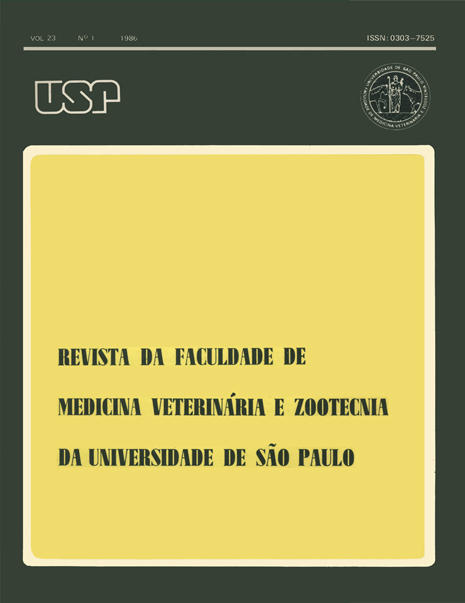Prevalence of internal parasitisms in cats in the city of São Paulo
DOI:
https://doi.org/10.11606/issn.2318-3659.v23i1p39-46Keywords:
Helmiths of cats, Protozoa of cats, Internal parasites, Prevalence, São Paulo, SP, BrasilAbstract
Feces of 215 cats from different areas of the city of São Paulo were examinated for evidence of internal parasitisms. Floatation in saturated sugar solution and centrifugation in water- ether methods were used. Prevalences (in percentage) were Ascaridae, 22.3; Ancylostomidae, 19.5; Cestoda, 10.2; Coccidia, 34 0 and others (Aelurostrongylus, Physaloptera, Plitynosomum), 5.6. The most frequent infections were Ascaridae and Coccidia, both predominating in animals less than 6 months old. Ancylostomidae were found in the cats less than 6 and 10 to 24 months old. D. caninun was similarly revealed in all the categories and the others , sporadically .Single infection was detected in 31 2% and multiple infection in 21.9% of examined animals. In this case Ascaridae, Ancylostomidae and Coccidia were the most frequent observed association. Prevalence s (in percentage) among Coccidias were the following: I. feli s 13.5; I. rivolta; 8.8; Sarcocystis spp., 9,3%; Cryptosporidium curyl, 6,0%; H. hammondi , 0,9% Eimeria sp., 0,5%.


